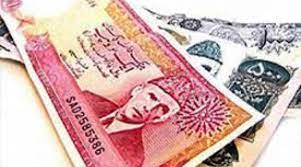
In order to unlock much-needed funds from a $6.5 billion program, the International Monetary Fund has asked for more time to negotiate with Pakistan.
The cash-strapped nation's four most important economic indicators are listed below.
Currency Reserves
Only three weeks' worth of imports are currently covered by Pakistan's meager foreign exchange reserves, which have reached their lowest level in ten years. The central bank's foreign exchange reserves decreased by $592 million from the previous week to $3.09 billion in the week ending January 27.
Inflation
For the first seven months of the current fiscal year, which began last July, inflation has averaged a record-high 25.4%, compared to 10.3% during the same period the previous fiscal year. The consumer price index increased 27.5% year over year in January, which is the highest level in almost 50 years.
In an effort to combat persistently high inflation, the central bank increased its benchmark interest rate by 100 basis points to 17% last month. The bank stated that achieving price stability was essential to achieving long-term, sustainable economic growth. Since January 2022, the bank has increased the key rate a total of 725 basis points.
Current Account Deficit
Pakistan's current account deficit decreased from $1.9 billion in December 2021 to roughly $400 million in December 2022 as a result of import cuts made by the government in an effort to prevent an external payments crisis.
Pakistani Rupee
On February 3, the rupee hit a record low against the dollar in the interbank market, falling to 276.58. Over the past 12 months, the rupee has decreased by more than 35%.
(Source:www.reuters.com)
The cash-strapped nation's four most important economic indicators are listed below.
Currency Reserves
Only three weeks' worth of imports are currently covered by Pakistan's meager foreign exchange reserves, which have reached their lowest level in ten years. The central bank's foreign exchange reserves decreased by $592 million from the previous week to $3.09 billion in the week ending January 27.
Inflation
For the first seven months of the current fiscal year, which began last July, inflation has averaged a record-high 25.4%, compared to 10.3% during the same period the previous fiscal year. The consumer price index increased 27.5% year over year in January, which is the highest level in almost 50 years.
In an effort to combat persistently high inflation, the central bank increased its benchmark interest rate by 100 basis points to 17% last month. The bank stated that achieving price stability was essential to achieving long-term, sustainable economic growth. Since January 2022, the bank has increased the key rate a total of 725 basis points.
Current Account Deficit
Pakistan's current account deficit decreased from $1.9 billion in December 2021 to roughly $400 million in December 2022 as a result of import cuts made by the government in an effort to prevent an external payments crisis.
Pakistani Rupee
On February 3, the rupee hit a record low against the dollar in the interbank market, falling to 276.58. Over the past 12 months, the rupee has decreased by more than 35%.
(Source:www.reuters.com)














